How Trish Summerville Went From Designing Christina Aguilera's 'Dirrty' Chaps to Receiving an Oscar Nod For the 'Mank' Costumes
- Oops!Something went wrong.Please try again later.
- Oops!Something went wrong.Please try again later.
The costume designer shares her biggest challenge on set of the award-season juggernaut and the backstory behind Xtina's iconic "leg coverings."
In our long-running series "How I'm Making It," we talk to people making a living in the fashion and beauty industries about how they broke in and found success.
As the Academy Award nominations were being announced on March 15, "Mank" costume designer Trish Summerville was all PPE-ed up, shooting the Jason Momoa-starring fantasy film "Slumberland." She was simultaneously FaceTiming her wife, up early in Los Angeles, and watching a semi-delayed livestream (relatable), when she heard her name.
"I went to the director on the film, Francis Lawrence, and we stepped outside," Summerville, on a call from Toronto, remembers. "He did give me a hug. He and I are really good friends and have known each other for many, many years. We had masks and face shields on, and all that, and were really, really safe. I have to say, it was great to get a hug."
Known for her stylized, high-concept and often high-fashion-influenced (or designer label-stacked) costumes, Summerville received multiple nods for her innovative work on the Old Hollywood-set "Mank," including her first BAFTA and her sixth Costume Designers Guild Award nominations. (This is also her first time being up for an Oscar.) She already won two CDGAs for 2013's "The Hunger Games: Catching Fire," also directed by Lawrence, and "The Girl With the Dragon Tattoo," helmed by "Mank" director David Fincher; and was nominated for an Emmy for the "Westworld" pilot, among other accolades.
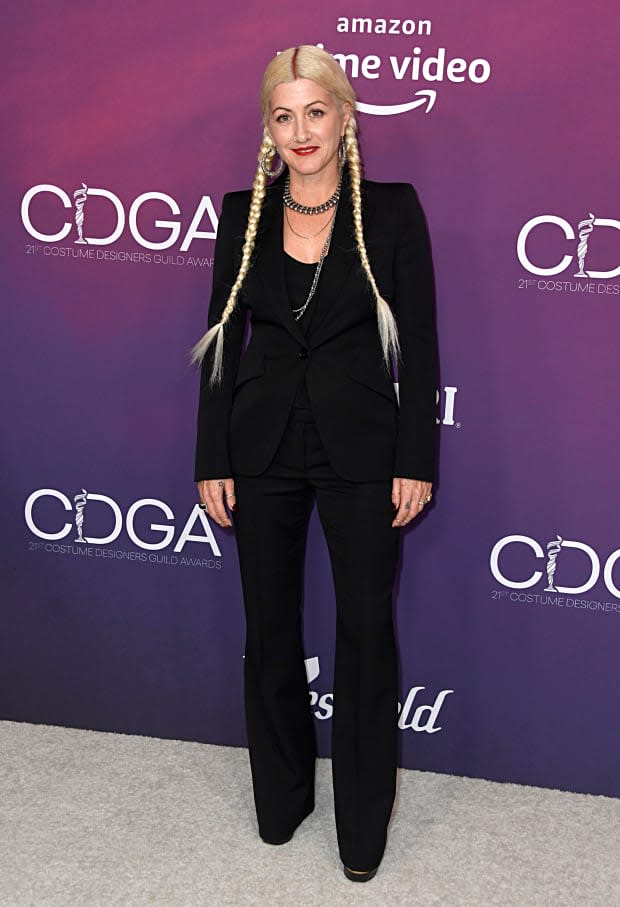
Summerville's painter mother, as well as grandmother and great-grandmother (who were both gifted sewers, knitters and pattern-makers), first sparked her interest in design and nurtured her natural talent. "I would go to thrift stores and Goodwill kind of shops and find things, repurpose them, cut them off and sell them back," she says. "As a kid, I would make my clothes and I made my prom dress."
Summerville decided to study fashion design at FIDM in San Francisco and finished out her degree in Los Angeles while gaining hands-on experience in Hollywood. "I was assisting on music videos and building clothing for musicians," she explains. "That moved into being called to do my own music videos." Not just any videos: Summerville played an integral role in some of the most formative, culture-impacting music videos of the early 2000s, like the one for "Moulin Rouge" soundtrack hit "Lady Marmalade" and the one for Christina Aguilera's "Dirrty" (more on that — and the chaps specifically — in a bit). Her first project with Lawrence, actually, was the video for my favorite Pink song, "Just Like a Pill." (She also costume designed his 2018 film, "Red Sparrow," starring Jennifer Lawrence as a Russian ballerina-turned-spy.)
Related Articles:
How the 'Red Sparrow' Costume Designer Transformed Jennifer Lawrence into a Ballerina-Turned-Superspy
How Jacqueline Durran Went From Selling Vintage Post-Grad to Winning an Oscar for Costume Design
How Ruth E. Carter Went From Costuming Her College Plays To Dressing 'Marshall' and 'Black Panter'
While racking up work in the music industry, Summerville also branched out into films and commercials. In the late '90s, she assisted costume designer Michael Kaplan ("Star Wars," "Fight Club") on the Geena Davis-led "The Long Kiss Goodnight" and mystery/thriller "The Game," directed by Fincher. "That's how I met [him]," she explains. "I stayed connected with him and then got calls to do some crazy, insane football commercial, with like, 150 football players and background."
Summerville clearly impressed the famously exacting director, as Fincher later gave her her first feature opportunity as head costume designer for the big-screen adaptation of Stieg Larsson's bestseller, "The Girl With the Dragon Tattoo," starring Rooney Mara as the goth-y, motorcycle-riding hacker, Lisbeth Salander. The two continued to collaborate on varied projects, including Justin Timberlake's 2013 video for "Suit and Tie," 2014's twisty thriller "Gone Girl" and, of course, "Mank."
Below, Summerville shares the backstory behind Aguilera's iconic — if not scandalous — "leg coverings," the key to longtime collaborations with a "perfectionist" director and advice for aspiring costume designers (and future interns). But, first, the big question: What will she wear to the Oscars?!
"I'm still looking. Because, in my head, it's that back-and-forth: a suit or dress?" says Summerville, adding: "I'm gonna start looking this weekend and I'm hoping to be able to find something from some of my favorite designers. Or I really, really want to promote a new designer out there. So, yes, if you have some suggestions, I'm open!"
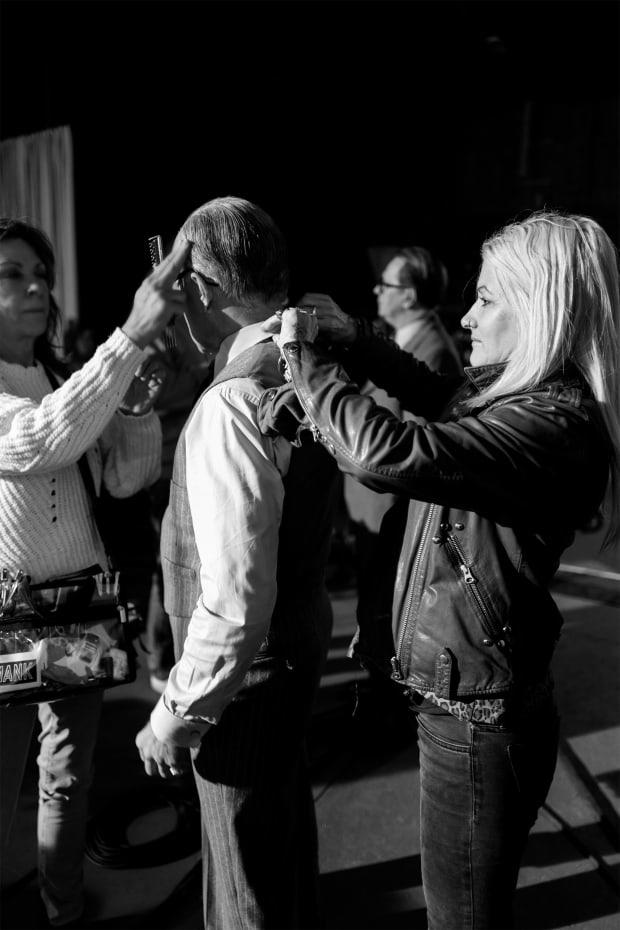
Tell me more about styling and designing for music videos, especially the ones that created such a cultural impact.
I had been working with different artists and doing some music videos — I had just done some stuff for No Doubt — and I got called to have a meeting for a Christina Aguilera video and a small tour. It was after 'Genie in a Bottle.' She was doing 'Lady Marmalade,' and I had also worked with Pink. So I [custom-designed] for 'Lady Marmalade,' which was amazing and fantastic. Paul Hunter directed that. I want to say we shot it in three or four days. This was before music videos were union, so it was just like, you could do anything. We shot like 20- to 22-hour days. I think our last day, we shot probably for 24 hours. We were dressing all the ladies and also doing repairs, because we didn't have much prep time or budget, really, to make multiples of all the costumes. I had a good team of people assisting me who were up for the long hours. We have a lot of great memories.
From that, I just continued working with some of those artists. That's how I met Francis Lawrence, because he directed Pink's 'Just Like a Pill' video. Then much later, he and I worked together on 'The Hunger Games: Catching Fire."
So it all tracks back to your music video work. Plus, the videos of the early 2000s were so cinematic.
When you're working, it's almost tunnel vision of the project — you don't think of other stuff. But looking back at 'Dirrty,' I had no idea of the impact or the backlash or the controversy or the love that that would get. We weren't trying to be anything risqué. It wasn't like, 'Oh, I know what we'll do!' For me, at the time, I was really, really into motocross and motorcycle clothing and really loved the coloring, the details and the leather. So that was just a natural instinct, to go that way, with the boxing ring. It just made me laugh so much that people kept referring to it as 'assless chaps.' Yeah, well, chaps don't have a bum in them! That's what chaps are. Chaps are legs coverings. So I found that dialogue really, really, really funny.
With 'Lady Marmalade,' it was just the big anniversary — I can't believe how many years that's been. It was just all about [the artists'] voices, really. I know it was a sexy video, but at one point, I remember the controversy happening of how scantily clad they're dressing. I'm like, 'Do you know what the song and the movie is about? It's not about a nunnery, guys.'
It's essentially costume design and storytelling, like in a movie or on a series.
We built everything. I know it's been written as [me] being a stylist, and I'm never offended. Some people get really offended if you call them one or the other. But I'm solid with what I do and who I am. There are times I purchase things and there are times we build stuff; there are times where I'm sitting on the floor, hand-rhinestoning. It takes everything from my background. I started out with music videos, where you had to do everything. In film, there's various people in your departments that can cover various things, and places you can go [to rent or build costumes]. I was naive to all of that. We just did it all ourselves. A lot of it, you just made do with what you wanted to, and you figured it out.
How do you think those experiences prepared you for 'The Hunger Games: Catching Fire' and 'Mank,' on which you custom-built the bulk of the costumes?
I'm really grateful that that's how I got my start. It's the same with editorial work. There were so many times that I would make hats and headpieces, because I couldn't find something that went with what we wanted to do in the shoot. The same with going to fashion design school — like, I know construction of garments. Can I make a men's suit? No, I absolutely cannot. And I'm 100% grateful for the people in my industry that can do that, and I shower accolades on everybody that's part of a costume crew because we need all those people. It takes a huge village to make stuff happen.
All my past experience really plays into [my work]. Like with 'Catching Fire' — doing so much editorial and celebrity dressing, I had a lot of showroom and designer contacts that really helped us out. It's hard to believe, but our budget was extremely restricted, and we had a very short prep time because the directors had switched really late and we got casting late. So that really helped me to have these really great relationships with people like Alexander McQueen, Juun.J and Iris van Herpen, and to really ask them — beg them — for these favors. I was so grateful for how many people came through to graciously loan us clothes, which is unbelievable for a film.
It's doing different types of projects and studying different decades of fashion that really helped me with 'Mank.' Going back to construction, of what's gonna read well [on-screen] and what fabrics were used in those periods.
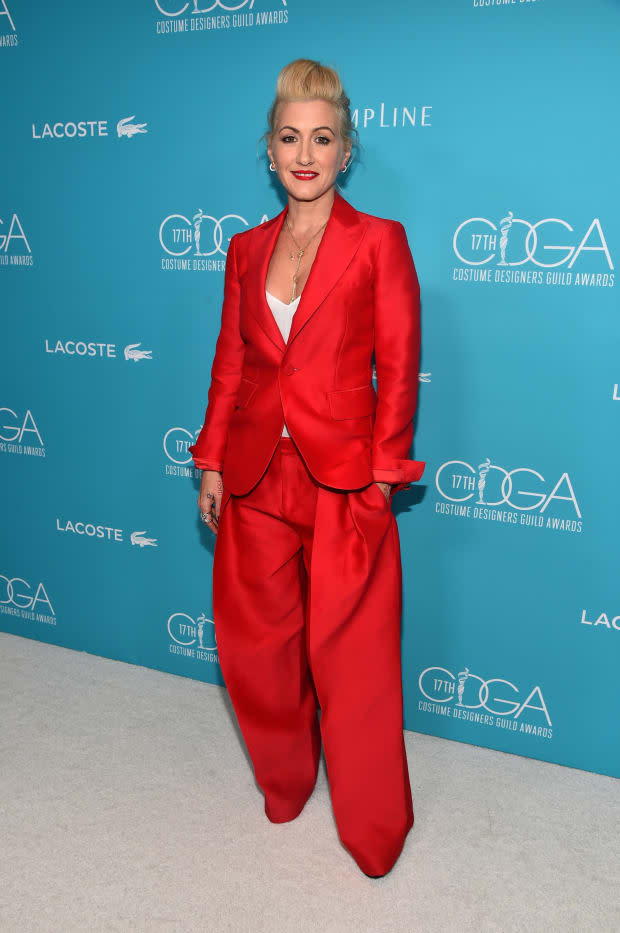
Costume design and fashion are, of course, two different categories and careers, but also with a Venn diagram overlap for storytelling. That's one of your specialties. What's your approach to combining both when appropriate for a project?
It was a no-brainer for 'Catching Fire' that if McQueen was going to be lovely enough to loan us pieces, Effie Trinket [played by Elizabeth Banks, would wear the brand]. I just really respect that house so much, and to be able to have that monarch butterfly dress there — and I'm really inspired by flora and fauna — made sense for the world that they're living in. Like, you have the luxury of having all these butterflies. It's a timeless creature. With 'Dragon,' I worked with Belstaff to make pieces for Lisbeth Salander. I was really grateful for that because they did the multiples for us — items that they gave to us or we buy wholesale and can age down. I just tried to apply it when it makes sense for the script and the story.
Fincher's 'The Girl With the Dragon Tattoo' was a major way to make your feature debut in 2011. What learning curves and challenges did you face?
That was enormous for me. At the time, I didn't freak out, but I should have been freaking out. Not to say I wasn't freaking out with joy, because internally, I was exploding. I had actually cleaned up my office a year or two ago — I'm a very-pen-and-paper person — and I found this very old calendar and, on a side margin, I had written 'big, big, great projects coming for me. A good call from Fincher coming for me.' Because I had done commercials with him and during the commercials, he had done films with other [costume designers], and I just thought, 'Oh I really, really want to do one of his films. I love this film so much and I really admire him.' It kind of blew my mind, you know, really putting that out there.
With 'Dragon,' I have to say, I will always be grateful that [Fincher] and [producer] Ceán Chaffin believed in me and they saw hard work in me. Part of what was great for me was I had no idea, on certain levels, of what my role was and my expectation. We did almost everything and shot it all in Sweden. We worked with a crew that's much different than our crew in the U.S. or Canada. Again, we just did everything together — I did aging, some sewing, I helped with props, applying the tattoos. We just had this family going, and we just helped each other out.
Looking back, I'm like, 'Oh my god, it's David Fincher, who's just a genius and a force in the film industry, and then Daniel Craig [who played Mikael Blomkvist] and then there's me. How did I get here?' It's that thing of hard work and perseverance and then just getting an opportunity. That's why I try and help raise people up and promote new people. You've got to offer people, when they're ready, the opportunity. David saw that in me.
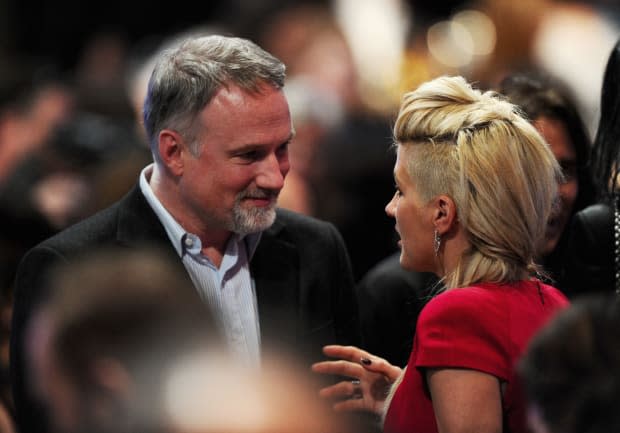
You've worked with Fincher for a decade now. What's the key in creating an ongoing collaboration with a director?
You have to have a lot of commonalities. You have to also be a good person on reading the room, listening and absorbing. I can say with Dave, because we're specifically talking about that now, you have to excel to your very, very best. You have to bring your A-game every day. I love that challenge. I don't ever settle. I mean, I can pick and choose my battles, 100%. You have to assess the situation of what are the most important things in the scripts and realizing your whole job is to get everything that director wants on that screen in the time and with the ability that you have — and making it the very best thing.
Someone recently told me that I'm a perfectionist, and I was like, 'Oh my god, no. Because if I was a perfectionist, I'd do better at my job.' They're like, 'That's the definition of a perfectionist.' I'm like, 'Yeah, it's not me, because David's a perfectionist,' and they're like, 'OK, just stop.'
But with a long term collaboration, I do think it's a lot of give and take, and it's a lot of listening. You 100% cannot have ego in the game. You've got to put that aside, for sure. You can have your opinions and you can have your convictions and your desires of what you want — and I'm very strong-willed and I will push for what I want. I will say, 'I like this,' and 'Here's why I feel this works for this character.' But I work really well with others. I love actors. I love hearing what they want, what their motivation is, how they view this character. It's also sitting down with Dave or Francis Lawrence and ['Westworld' co-creator] Jonathan Nolan and saying, 'Tell me what you see.' And we do that with each other. Dave lets me bring him tons of stuff. He's never stifling. What makes a really great collaboration is the mutual respect of the creativity.
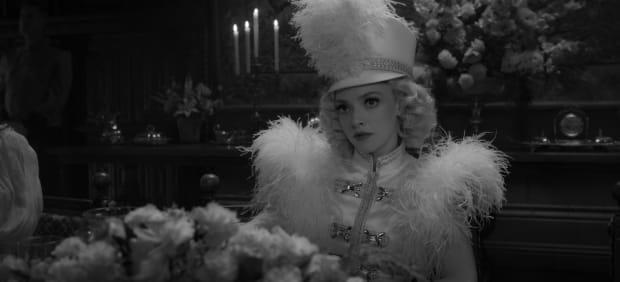
You're always pushing yourself with different types of projects, including 'Mank.' which is set in the '30s and '40s and shot in black and white. What was the biggest challenge you faced on that film?
Well, the most challenging part was definitely the black and white. Several people said this to me as, 'Oh, this will hopefully make it easier for you to find or build up all the costumes that you need because it's black and white. You can use anything.' And it's completely the opposite of that. My amazing assistant, Corey Deist, my key costumer Joseph Cigliano and I spent a lot of time together going to the rental houses and doing fabric shopping. We'd just lay everything out and take photographs in three different settings in my iPhone. I would send that to Dave and Eric [Roth, producer] and say, 'Of these three, where are we leaning towards in lighting, color and in tone? So that I can set that on my phone.' The Noir filter was how we proceeded and shot everything. I realized why Edith Head wore the glasses that she wore all the time — because it helped her view things tonally in black and white when she was looking at colors. At one point, I was like, 'Do I have to get these glasses?!'
That was a big tool for us to really realize what fades away, what pops too much and how patterns can become too busy for what we needed. And, hopefully, keeping all the details and what's appealing to the eyes on the screen and on the monitors, because we shot in black and white. Then, what you're seeing with your naked eye on set also has to be appealing for the actors — and also appealing for us and for Dave — and not take you out of this story, if you have a roomful of really garish, jarring, massive colors. They just take you out of this world.
I know that you can't talk too much about your new project, 'Slumberland,' but how did your previous experiences help you prepare for this movie?
On every project, I learn more and more about fabric and resources. I always like to have my office really close to the workroom, because I spend a lot of time every day in the breakdown room, where they do aging and dyeing. It's exciting for me. I like seeing builds and just collaborating.
It's contemporary, but it's a bit of a whimsical world. I've gotten to be really playful. I don't tend to do movies that are family films — and not for any particular reason, it's just those either don't come to me or the directors I work with haven't done those kind of films. I have made a joke recently that this is going to be the first project that my whole family can see. There's no blood and there are no murders.
There's a lot of color and pattern in this film. In an odd way, through 'Mank,' I've gained an understanding of color — or the lack of color — and how patterns can be translated. I was really drawing from my 'Mank' experiences of separating patterns and prints, not using very many and keeping a fairly solid world, and trying to go with more embroideries and finding all these really interesting patterns.
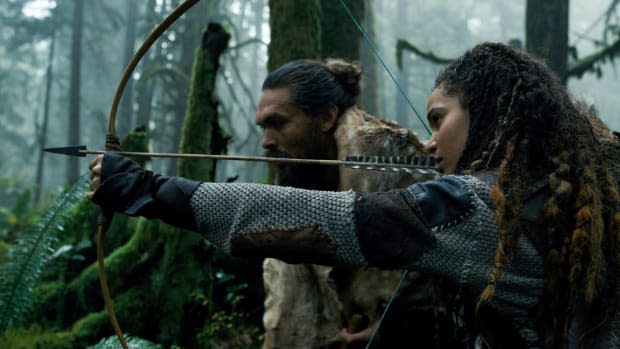
Costume designers, traditionally, tend to be part of the background, and general audiences may not be not super aware of the artistry that goes on behind the camera. But now I feel like costume designers are getting their due and there's more interest in the job and how it plays into the overall storytelling. I know you're on Instagram — how do you put your job and contribution to storytelling out into the world?
It's really tricky. This is the first time I've ever had publicity help. 'Mank' is one of the first films that I ever worked on — or project in general — that really, really encompasses all the crafts people [in the promotion]. It's a great feeling. I mean, that's definitely not why we're making a film, but I had a really heartbreaking experience [with] the first season of 'See' [on Apple TV+, with episodes directed by Lawrence]. It's some of the costumes that I'm most proud of. We made incredible things. We used so many recycled and repurposed items, and it was just really fulfilling to do. It just came and went and there wasn't really any exposure on it. You just have to come to terms with that. I'm sure so many of us feel that way. Like, you work on something, and it doesn't necessarily get out in the world the way you hope. But, it's that thing of, in the time of it, your goal, your objective is the creation. You're not looking at what the outcome is going to be. So I wouldn't change working on shows, whether they get recognition or not. But you hope they do because so many people participated in it.
What advice would you give to an aspiring costume designer, especially one with a keen interest in fashion?
Learn everything. One of the reasons that I can work well with an entire team is because I do understand whether I can do someone's job or not. I have the understanding of what it is that they do. I take interest in every position on the show or film. I asked a lot of questions and observe.
Definitely, if you can and if you're able, go to design school. That's a big plus because you can learn construction and draping. I don't do patterning, but I can do draping enough that I can do a lot of my designs. It's learning and having knowledge of what it takes to make a garment.
Also, know history. Get a lot of books on every decade of fashion and construction and learn about fabrics. I read a lot. I have a lot of photography books and books on fashion and books on garments and history. I constantly am researching new fabrics. I just found these fabrics that are made out of seaweed and mushrooms, which is amazing and brilliant. Just be curious with the world.
Look at fashion all the time and search out new designers. It's just gaining all the knowledge you can gain. Try and find somebody to mentor you. Find a costume designer that you like and study the body of their work.
What qualities and experience do you look for in an intern or assistant?
You have to be nice. You have to play well with others. You can't come in with ego. You have to come in with a sense of pride and who you are. You can have opinions and all, but work well as a team. Be eager to learn. You have to be passionate. You have to want to be there every day. You have to want to explore. You have to not be afraid to show me things and not be afraid of like, when we're running through and pulling [costume options and I say 'no'] — because I do take the time, when we're pulling stuff, to go through and say, 'OK, these don't work and here's why' or 'these are great and here's why.' Because if you never get the 'why' behind the yeses and the nos, you don't learn. You have to study the 'why,' especially if it's your first time working with me.
You have to love what we do because our hours are long, and it's a weird business. We move from place to place and meet new family members all the time. You have to know how to go with the flow and also how to stand your ground.
This interview has been edited and condensed for clarity.
Never miss the latest fashion industry news. Sign up for the Fashionista daily newsletter.
